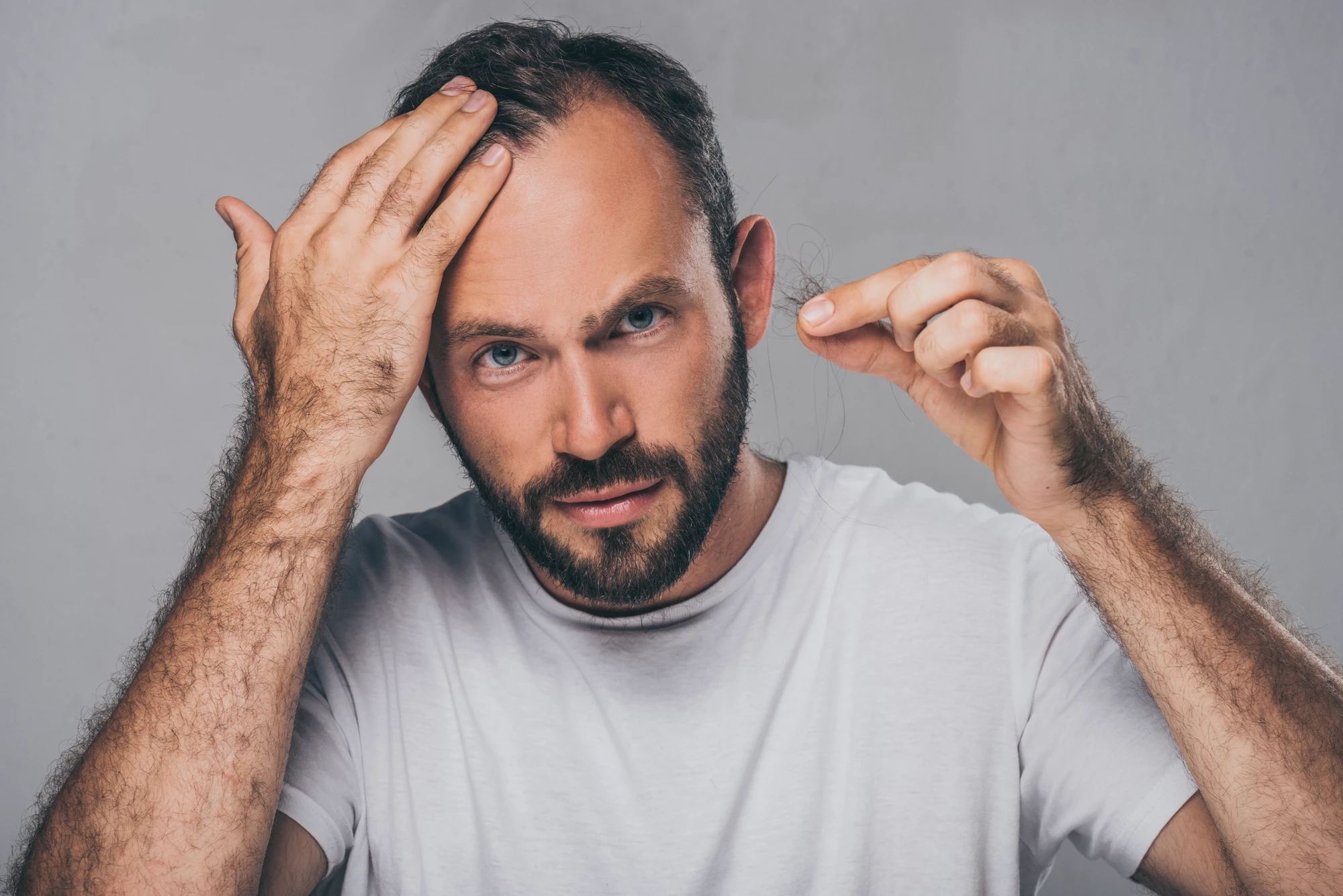A new study has looked at the molecular mechanisms underlying hair growth and found that aging or senescent cells may be key to promoting hair growth in humans. Their findings potentially open the door to developing new hair loss treatments that harness the innate abilities of these often-maligned cells.
Senescent cells get a bad rap, given their association with the hallmarks of aging and a number of medical conditions, including cancer, diabetes, cardiovascular disease and Alzheimer’s. But new research has found that senescent cells are not all bad.
Cellular senescence is when cells stop dividing but don’t die and instead accumulate in the body. It’s a normal physiological event that occurs naturally as people age. Now, researchers at the University of California, Irvine (UCI) have looked closely at the molecular mechanics of senescent cells in the skin of mice and found they can stimulate hair growth.
Skin contains progenitor-rich hair follicles that renew themselves in cycles. The process is kicked off by a signal that activates hair stem cells, causing them to divide and enabling the follicles to produce new hair. After each cycle, the stem cells remain inactive until the cycle starts again.
The researchers examined mice with pigmented skin spots that contained hyperactivated stem cells and showed accelerated hair growth. These spots strongly resemble what in humans are called nevi, a type of birthmark that’s dark-colored and hairy. What’s unique about these hairy nevi is that while they accumulate a large number of senescent pigment cells, they continue to grow robust hair.
Examining the skin spots, the researchers found that their senescent pigment cells produced high levels of a signaling molecule called osteopontin, for which the senescent hair stem cells had a matching receptor molecule called CD44. When osteopontin and CD44 interacted, the stem cells were activated and produced hair. Mice genetically modified to remove the genes that produced osteopontin or CD44 showed significantly slower hair growth.
“We found that senescent pigment cells produce large quantities of a specific signaling molecule called osteopontin, which causes normally dormant and diminutive hair follicles to activate their stem cells for robust growth of long and thick hairs,” said Maksim Plikus, one of the study’s corresponding authors. “Senescent cells are typically viewed as detrimental to regeneration and are thought to drive the aging process as they accumulate in tissues throughout the body, but our research clearly shows that cellular senescence has a positive side to it.”
The researchers also examined human hairy nevi by way of RNA sequencing and found significant differences between the nevi and neighboring normal facial skin, confirming the role of osteopontin in promoting hair growth in humans.
The researchers say their findings may lead to the development of new treatments for hair loss that exploit the innate properties of senescent cells.
“Our findings provide qualitatively new insights into the relationship between senescent cells and tissue’s own stem cells and reveal positive effects of senescent cells on hair follicle stem cells,” said Xiaojie Wang, lead author of the study. “As we learn more, that information can potentially be harnessed to develop new therapies that target properties of senescent cells and treat a wide range of regenerative disorders, including common hair loss.”
The researchers plan to expand their research to examine other molecular mechanisms underlying hair growth.
“In addition to osteopontin and CD44, we’re looking deeper into other molecules present in hairy skin nevi and their ability to induce hair growth,” said Plikus. “It’s likely that our continued research will identify additional potent activators.”
The study was published in the journal Nature.
Source: University of California, Irvine





